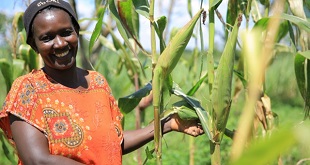A brief prepared by the Karamoja Development Forum talks about over 190 cattle rustling incidents in the last nine months since October 2019. Communities in Moroto, Napak and Kotido have lost thousands of cattle and human life.
The spokesperson of the UPDF’s Third Division in Moroto, Maj. Peter Mugisa, says since January, 8464 animals had also been recovered from the cattle raiders by the UPDF.
In an interview on July 02, he told The Independent that 195 warriors have been “put out of action” meaning killed, while 293 warriors have been arrested. On the government side, he says, three UPDF officers and two Local Defence Unit (LDU) soldiers have died in the battles.
Up to 68 guns, 813 rounds of ammunition and one 82 mortar bomb have been recovered, he says, Other assorted pieces of equipment recovered include; nine mobile phones, 42 bundles of bows and arrows, three pairs of binoculars and several UPDF plain uniforms.
In June alone, 11 guns were recovered, 594 animals recovered, 58 warriors arrested, 68 killed while 188 rounds of ammunition and one 82 mortar bomb were recovered. Maj. Mugisa says the cattle raids are not customary anymore; they have gone commercial.
“The Karimojong are stealing animals for sale; they organise trucks and organise buyers in the bush, steal animals and sell them off to the truckers who whisk them away to the markets. This has made it difficult for the UPDF to recover the animals.”
Still, Maj. Mugisa says, “Karamoja remains peaceful and the situation remains under control.”
Recent research by the Pretoria-based Institute for Security Studies (ISS) on cattle raiding in East Africa shows how a growing demand for cattle across eastern Africa has exacerbated this problem.
The paper, ‘Vanishing herds: Cattle rustling in East Africa and the Horn,’ was published in December 2019 based on research from 2017 and the first half of 2018. It recorded brutal attacks in which thousands of livestock and dozens of people were killed in various parts of eastern Africa.
The researchers said most incidents suggest that the practice has become a complex transnational organised crime because of the use of small arms and light weapons and the involvement of actors whose interests are purely economic.
Multiple factors such as the role of politicians, the involvement of businessmen supplying meat to towns and cities as well as unemployment; especially among the youth, are some of the elements that have modified the traditional face of cattle rustling.
The researchers say the practice is now embedded in the wider cattle trade business enabled by government corruption, with state officials often turning a blind eye or collaborating with criminals.
The animals are moved in similar ways across international borders in small numbers to avoid suspicion, or they are disguised to conceal their real colour. In these circumstances, documents are falsified to show that cattle have followed a genuine transaction process necessary for export.
On the sidelines of the Lokitela-ekuam village community meeting, Ariko Lomuria, a youthful giant whose two lower incisors are knocked out told The Independent that in the life of a Karimojong, the cow does so many things and he equated it to a bank.
“When we want to take a child to school, we sell a cow; when anyone falls sick, the immediate source of money is from the cow. We use cows to marry and the same cow helps us to construct a home.”
“When the sorghum you see over there fails due to drought, the cow helps us to survive hunger. The cow is also like a tractor and we use it to plough our gardens. This is why the Karimojong will always cherish the cow.”
Lomuria is a kraal leader who also heads the Kobebe Peace Committee in Moroto District and he is bothered by what is happening in Karamoja. He told The Independent that in just a ‘short time,’ he had seen over 30 people lose their lives in his community. He said he could not put a number to the livestock his community had lost. He accused the people of Kotido and Napak of piling misery and suffering onto his community.
Lomuria said the Karimojong have no option but must return to dialogue if the region is going to escape another protracted conflict. He told The Independent that the perpetrators are ‘community outcasts’ who do not want to dialogue.
In the same meeting, we met 17 year-old Simon Peter Ilukol, a Primary Six pupil. Although he listened attentively throughout the meeting, he was also reading the creation story in the bible a friend of his carried to the meeting. He told The Independent that cattle theft is a big problem in his community. In June, his father lost 45 cattle.
“We were left with nothing,” he said, “Karamoja needs its peace back because when there is peace, our animals multiply and there is joy in the community. When there is no peace, we lose a lot of things and that is not good.”
Robert Adupa, a reformed warrior who is now a youth leader in Moroto District, told The Independent that the warriors need to be talked to in a friendly way.
Adupa said his team had recovered 15 guns peacefully between March and May. Once he gets a tip that a warrior has a gun, he meets them or goes to their kraal and negotiates for the weapon. Some warriors direct him to a secret place where they handover the gun, he told The Independent.
****
 The Independent Uganda: You get the Truth we Pay the Price
The Independent Uganda: You get the Truth we Pay the Price




Hello to every body, it’s my first pay a quick visit of this weblog; this
weblog consists of amazing and really good information for readers.